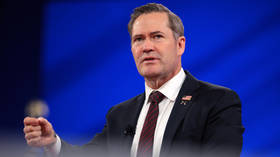World’s largest automaker calls on India to change hybrid-car policy

Toyota Motor Corporation has been lobbying the Indian government to reduce taxes on hybrid vehicles by as much as one-fifth, arguing that hybrids pollute far less than petrol cars, Reuters reported on Monday, citing a company letter.
According to the report, New Delhi taxes electric vehicles (EVs) at just 5%, while the levy on hybrids is as high as 43%, just below the 48% applied on petrol cars.
Toyota reportedly argued the five-percentage-point differential favoring hybrids over petrol cars is “insufficient,” taking into account the reduced emissions and better fuel consumption they offer.
According to Toyota’s letter to Prime Minister Narendra Modi’s think tank, Niti Aayog, the tax differential over petrol cars should be as much as 11 percentage points for hybrids and 14% for flex-hybrids.
Reuters calculated that this amounts to a tax rate of 37% on hybrids and 34% on flex-hybrids, equating to reductions of as much as 14% and 21%, respectively.
“We would kindly request for a proportionate policy support,” the head of Toyota in India, Vikram Gulati, wrote in the letter on September 20, as cited by Reuters.
India’s tax structure makes producing hybrids “30%-35% costlier than its petrol counterparts,” the correspondence said.
The Japanese firm also asked India to bring hybrid cars under a government incentive program that offers discounts to buyers. The scheme is currently available only for EVs.
The higher tax on hybrids could be an impediment for the Japanese auto giant’s plans to expand production capacity in a bid to meet growing demand in India for such cars, the report indicated.
Toyota has been facing criticism for continuing to support hydrogen-powered cars, with the company claiming these make better sense for markets where the infrastructure is not ready for EVs. The world’s largest carmaker has been calling for a “multi-pathway” approach to solving the climate crisis.
Toyota told Reuters that the “most optimal way” of reducing carbon emissions was through a mix of electrified and alternative energy options, including EVs and hybrids.














